Mission and Vision
What is Montessori?
The Montessori Method nurtures a child’s innate curiosity – the same curiosity needed to develop ingenuity and critical thinking skills. Through the guidance of an accredited Montessori teacher and a classroom prepared with self-correcting and sequenced didactic materials, children are encouraged to develop in their independence, curiosity, and problem solving. Montessori is one of the world’s most successful early childhood pedagogies and supports children’s development in every aspect: physical, social, emotional, and cognitive.
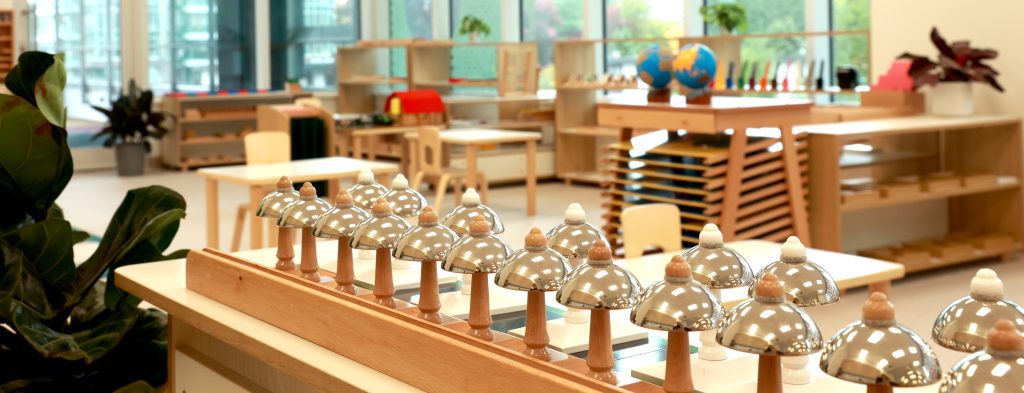
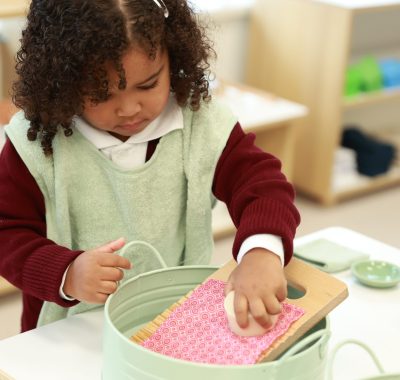
Mission
WMA offers authentic Montessori education to serve families with children from walking age to 6 years old. We nurture young children to become independent, strong, and self-motivated individuals, and we support every child to develop to his/her best potential.
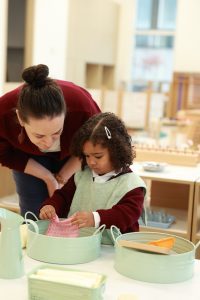
Vision
To create an environment with the highest respect for the rights of children and liberty for human development in childhood. To bring peace to the community and families through education based on Montessori philosophy and pedagogy. To help build a harmonious world by inspiring the minds of the future citizens.
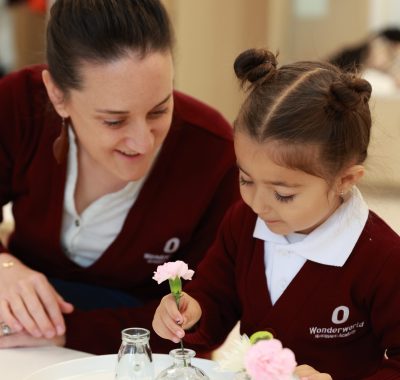
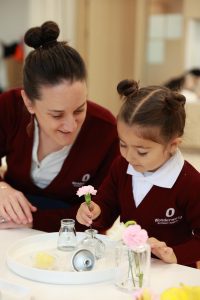
Our Approach
Practical Life
Practical Life
Practical life activities include many tasks children see as part of their everyday life, such as carrying objects, preparing water and food, polishing wood, sliver, shoes and furniture. They learn to button shirts, tie their shoes, wash their hands, etc. without adult assistance. The children learn to appreciate the beauty in the environment by arranging flowers and caring for plants. The exercises of practical life are designed to foster children’s self-confidence, self-esteem and independence, while also helping them practice self-control and refinement of movement.
Sensorial
Sensorial
Young children are sensorial learners. The sensorial materials are designed to help children refine their senses by isolating and categorizing each of the defining qualities, such as colour, shape, size, weight, texture, smell, and sound. For example, one material introduces children to mathematical facts, such as the base 10, through experiencing materials with ten parts, usually incrementally different in size and dimension. These materials will enrich children’s sensitivity and vocabulary. As they grow, they can classify these concepts for future learning.
Mathematics
Mathematics
The mathematical mind is developed when children interact with Sensorial and Practical Life materials. Children learn how to assess quantity through tangible objects that represent abstract ideas. Math activities demonstrate sequence, recognition, and numbers 1 to 10. The decimal system is presented by golden beads; linear and skip counting, square root and power of numbers 1 through 10 are introduced by chains.
Language
Language
The child’s absorbent mind is hungry for language. They want to know the name for everything. All the preparation for the writing hand will be introduced through a number of activities and materials from both Practical Life and Sensorial aspects, which allows them to begin forming letters with ease. Materials like sandpaper letters, metal insets and the moveable alphabet are designed to develop children’s muscle control for writing. WMA’s bilingual (English and Mandarin) learning environment will foster their ability to naturally absorb different languages.
Cultural & Social
Cultural & Social
Cultural activities at WMA encompass aspects like geography, zoology and botany, and art and music in the everyday classroom. These activities will enrich the child’s world and highlight all the wonders it beholds. These activities will not only excite but also cultivate a sense of wonder and belonging. For geography, there are various maps which introduce continents and countries, and flags for their respective places. Botany activities look at the scientific names of different parts of the tree, leaf, flower and root. In addition, children will have the opportunity to help with the rooftop garden as one of their outdoor activities. Zoology activities explore how vertebrates and invertebrates are different, like mammals, birds, fish, reptiles and amphibians.